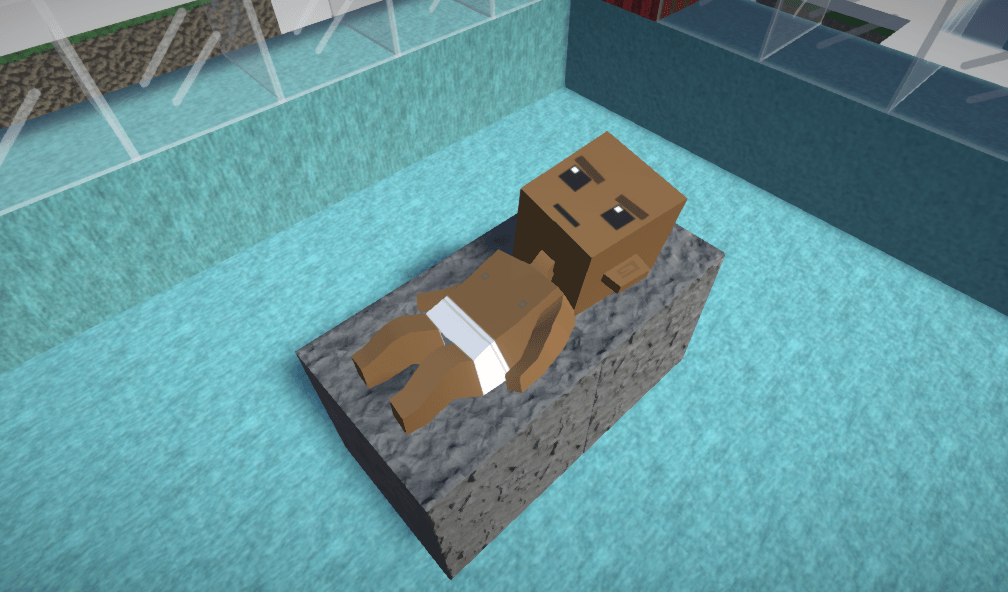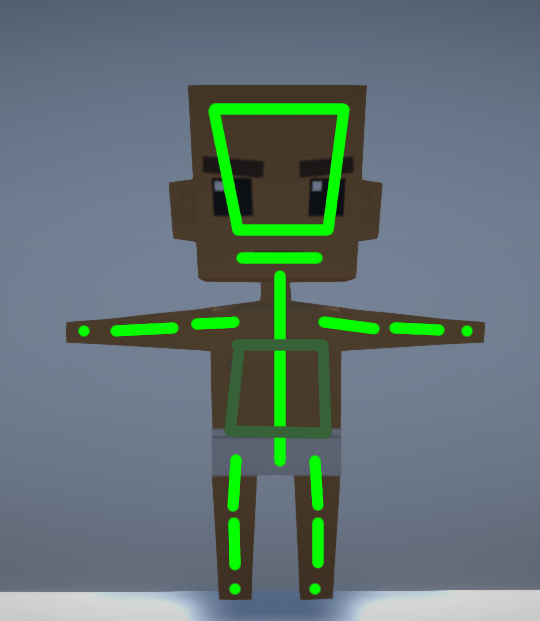What is inside a peon? – Dev Blog 12
Greetings! We have been very busy this week focusing in quality of life improvements in the UI – as well as making the UI itself more interactive. But window management would make for a rather bland development blog post – so instead let’s focus on something more interesting : The Anatomy of a Peon.
A peon is currently the most detailed locally based simulation in Fringe Planet. The global simulations are very detailed (temperature, noise, magic) but the local simulations work in a slightly different way – each one is instanced for the character they are running for.
We have a base simulation running on all creatures – called FaunaSim. This is a fairly abstracted concept, and contains base movement speeds, energy levels, health and other things. If no other simulation is connect to FaunaSim, then these values are used as is – meaning it is relatively simple to get other creatures into the game, just by adding a FaunaSim to a prefab. However, a FaunaSim will check to see if other simulations are running on prefab and will derive it’s values based upon the output of these simulations. It’s these other simulations that add the realism to Fringe Planet.
A peon currently consists of five parts :
- Clothes – what a peon wears can change it’s mood, or keep it warm
- Inventory – what a peon carries can effect it’s speed (carrying more results in lower movement speed)
- Soul – well, the AI component, the mind which determines what a peon will do and what it is thinking
- Bones – the bones that are inside the peon – this isn’t related to rigging, but rather the leg bone being connected to the back bone
- Organs – these are the squishy bits inside the peon, the bits that process food and determine how the peon is alive
We have spoken about clothes and inventory in detail, so let’s look at bones and organs:
Bones
A bone is a structural component which is always initially connected to another bone. These bones have a strength associated with them, and if forces applied to the bone are greater than the strength of the bone, that bone will shatter. A bone can also contain organs – in the case of a peon, the skull bone contains the brain, the jaw bone contains the throat and finally the ribcage bone contains the rest of the internal organs. If a bone is shattered that contains an organ, there is a high chance of the organ(s) inside that bone will be damaged. A peons arms and legs consist of an upper bone, a lower bone and an “extremity” bone (i.e. feet or hands).
The arms and leg bones determine a base speed stat which changes how fast a peon will perform a task – the arm bones determine how quickly a task will be done (building, cooking etc;) whereas the leg bones determine how quickly a peon will move. If all the bones are broken in the legs, the peon will be unable to move (though on the roadmap we are looking at investigating movement based upon arms, peons dragging themselves along).
Organs
Organs are not always associated with a bone (eyes and ears) but are all very important in working out how the peons body works. It is an incredibly simplified version of the human body. Each organ has two values associated with it – a health and an efficiency rating. Efficiency rating determines how well an organ does it’s job. Health determines damage, and can very much effect the efficiency rating of the organ. Each of the organs do something specific:
- Brain – determines how often a peon “thinks” – a healthy brain will run through AI routines (pathfinding, checking for new tasks) every 0.25 seconds. A damaged brain will increase this number. If this organ is destroyed, the peon dies instantly
- Heart – determines speed of actions in general, the healthier the heart, the more rapidly a peon will perform an action. If this organ is destroyed, the peon dies instantly
- Ears/Eyes – both determine how the peon perceive the environment, the distance they react to unknown events
- Mouth – determines communication skills (tied with the friendliness attribute) and also the speed at which food is consumed
- Throat – Similar to the mouth, but protected by a bone, allowing a peon who may have had a serious mouth injury to still consume (even if messy) and communicate (even if in grunts)
- Lungs – Similar to heart, this is a speed modifier currently, but can be damaged without bone damage (breathing in fire, dangerous gases, spores)
- Stomach – determines how quickly food consumed turns into energy
- Liver – determines if spoiled food will cause illness and how the body reacts to poisons
- Kidney – determines how long a peon will be ill, when a peon is poisoned the efficiency rating of this organ determines how long any poison debuffs will run
- Intestines – acts a storage contain for waste solids
- Bladder – acts a storage container for waste liquids
The bones and the organs when combined with the AI, clothes and inventory ultimately determine how the peon interacts with the world around it. It is important to keep your peons as healthy and as injury free as possible – it is very easy to have a peon working at less than peak efficiency after some scrapes and bruises.
We hope this gave you some insight into some of the behind the scene simulations that are running in Fringe Planet – we are certainly planning on exposing this information to players via the UI, but currently it’s operation (aside from the side effects) are quite invisible.
Let us know what you think, and once again, thanks for reading!
There is a lot more to read about Fringe Planet… why not try:



